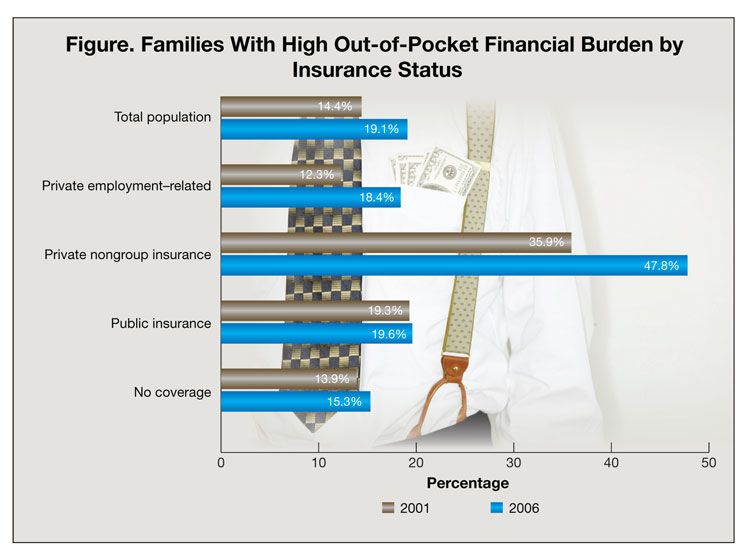- Clinical Technology
- Adult Immunization
- Hepatology
- Pediatric Immunization
- Screening
- Psychiatry
- Allergy
- Women's Health
- Cardiology
- Pediatrics
- Dermatology
- Endocrinology
- Pain Management
- Gastroenterology
- Infectious Disease
- Obesity Medicine
- Rheumatology
- Nephrology
- Neurology
- Pulmonology
Even With Reform, the OOP Financial Burden of Health Care May Grow
The sweeping health care reform bill signed into law in March will eventually provide coverage to 32 million more Americans, but the Congressional Budget Office has estimated that about 23 million will still be without health care by 2019.1 Even those with insurance may continue to have high out-of-pocket (OOP) expenses, because coverage premiums and medical services outpace household incomes.
The sweeping health care reform bill signed into law in March will eventually provide coverage to 32 million more Americans, but the Congressional Budget Office has estimated that about 23 million will still be without health care by 2019.1 Even those with insurance may continue to have high out-of-pocket (OOP) expenses, because coverage premiums and medical services outpace household incomes.
According to a recent study, in 2006, 19% of respondents reported having a high financial burden-spending more than 10% of their before-tax income on such expenses. This is a significant increase from 2001, when 14% of Americans reported having a high financial burden (Figure).2
Those with middle or higher incomes who receive private insurance were most affected-even those with employer-sponsored coverage. This shows that the financial burden of OOP health care costs is significant in all populations, not

just the poor, according to study author, Peter J. Cunningham, a senior fellow at the Center for Studying Health System Change in Washington, DC.
Although results showed that the levels of financial burden among the uninsured were lowest, Cunningham wrote that the uninsured spend less on medical costs overall because of their reduced access to care. The reported level of OOP spending understates the true financial burden of the uninsured.
The recent health care reform legislation may not alleviate these problems, said Cunningham. “We are going to have to see the kind of economic growth that is going to generate increases in families’ incomes . . . [it] wasn’t just that health care costs were rising, it’s that family incomes were largely stagnant,” he said.3
References:
References
1. Beaulieu D. CBO estimates 23 million will remain uninsured after health reform. Fierce Healthcare. March 25, 2010.
2. Cunningham PJ. The growing financial burden of health care: national and state trends, 2001-2006. Health Aff (Millwood). 2010 Mar 25; [Epub ahead of print].
3. Allen J. Healthcare costs burden more Americans: study. Reuters. March 25, 2010. http://www.reuters.com/article/idUSTRE62O1DJ20100325. Accessed March 29, 2010.
